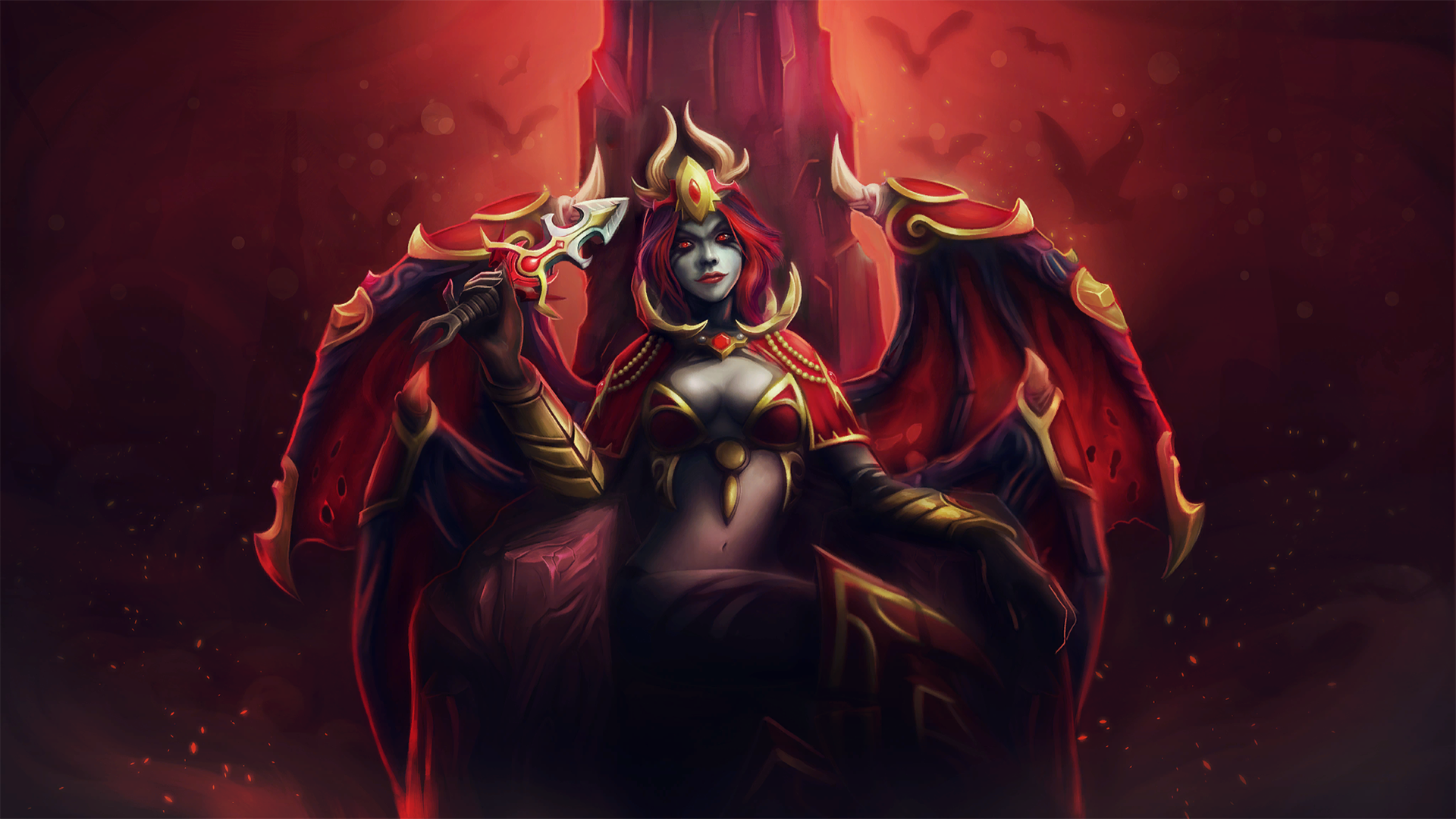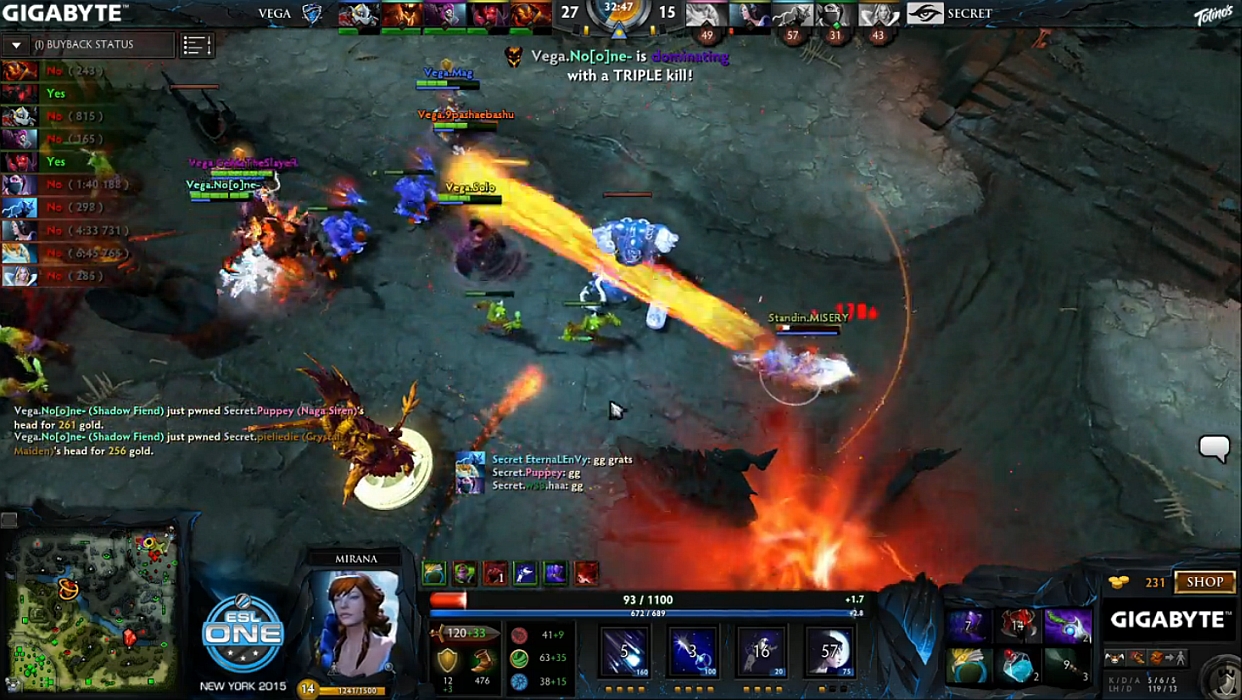What did ESL One New York reveal about Dota 2's new pro metagame?

ESL One New York came and went this past weekend, bringing the world its first Dota 2 LAN on the 6.85 patch. Eight teams representing North America, China, Southeast Asia, Europe, and Russia came together for a prize pool over $280,000. ESL One New York isn’t going to be the biggest tournament on this patch, but it marks a return from the summer break that started after The International 5. Dota 2 is back in session with both spectators and players learning what the new patch brings to the scene.
Early tournament confusion
Despite 6.85 not containing fundamental game changes, there was still anticipation that this patch could dramatically alter professional play - but no one was quite sure how, and early picks reflect this. Throughout the four quarter final series there was a random-seeming diversity of hero picks spanning multiple years of International metagames. By far the oddest combination of heroes was played by Team Archon, who chose Chaos Knight, Medusa, Winter Wyvern, Nyx Assassin, and Doom. Oddly enough, Chaos Knight was played as a semi-support in an effort utilize his stun and the new armor reduction on Chaos Strike. However, the Team Archon goof troop couldn’t handle CDEC’s somewhat more traditional lineup of Rubick, Clockwerk, Bounty Hunter, Queen of Pain, and Sniper.
The TI5 runner-ups delivered a reality check - the Chaos Knight and Medusa meta hasn’t suddenly taken over Dota 2. The lack of dramatic changes in the 6.85 patch means that the meta is going to have a much slower pace compared to previous patches, and crazy team compositions need a basis in real principles. Still, CDEC did pick Sniper - a pick that was a lot less common in 6.84. By picking a long-range carry and multiple heroes with disengage potential, Sniper could either force Team Archon to dive him, or take pot-shots from a distance and carry his team to victory. Even if the zany composition from Team Archon didn’t work, CDEC still utilized a non-traditional pick, indicating a willingness to try new ideas.
The queen of New York
These changes in thinking are fairly evident with some of 6.84’s top picks, like Leshrac and Storm Spirit. Leshrac has fallen from grace, with a scant three picks and no wins. There aren’t even stats for Storm Spirit since he was never picked. In fact, the jolly man wasn’t even banned. ESL One New York worked as a sieve for the top tier picks, separating the gold from the rest of the dirt. Queen of Pain was the most chosen hero, serving her standard role as a consistent laner with high potential to control a game. Lots of other heroes have retained their 6.84-era popularity. Gyrocopter, Shadow Fiend, Clockwerk, Dazzle: these picks aren’t redefining the meta.
You can’t measure which heroes are strongest entirely through picks, though, as they’ll have been banned too frequently. The pros are truly scared of walruses and spiders, with Tusk and Broodmother receiving 13 and 10 bans respectively. In every game of ESL One, Tusk was either picked or banned. This follows the 6.84 trend of removing heroes that could reliably dominate an early game and snowball into the midgame (literally, in Tusk’s case.) Broodmother, formerly a niche pick, can similarly control the laning phase and open up space for the rest of her team. Even if counters for Broodmother are locked in, she can still put enough pressure to cause heavy rotations and keep her team in-control. A third hero charted high in the ban rates as well, and for good reason.

A new hot pick
Alongside Broodmother, the new breakout hero seems to be Ember Spirit. He was picked fairly frequently at TI5, but nowhere near as much as Gyrocopter or Queen of Pain. Part of this is due to the patch nerfing many of the counters for the ridiculously low-armor hero, and the opportunity afforded for teams to lane him outside the middle lane. Additionally, Ember Spirit has a new popular build that involves purchasing an early Boots of Travel so he can constantly farm, heal, and join team fights. The only time Ember Spirit is inactive is when he’s dead. This is a stark contrast to 6.84, where he would be chosen as a viable mid-game fighter but most teams focused on getting him farm and split-pushing. While this build does give him the option to split push and build for the late-game, his insanely high early game damage is being used to control games like former top bans. The counter to Ember Spirit’s success was to start banning him or lose, as he won all five games he played.
The grand finale’s grand choices
Game one of the finals between Vega Squadron and Team Secret showed that both finalists were willing to experiment. Team Secret drafted around stall tactics with Anti-Mage, Elder Titan, Dark Seer, Windranger, and Crystal Maiden. Vega Squadron drafted around pure unadulterated aggression with Io, Tiny, Clockwerk, Disruptor, and Slardar. Both teams had four common 6.84 picks, but their 6.85 choices played a pivotal role in the team. Optimally, Elder Titan would be able to constantly disrupt Vega Squadron’s initiation with Echo Stomp and set up easy kills on Io. Meanwhile, Slardar proved to be a fine pick for the safe lane duo, and would fill the role of more aggressive follow-up to Vega’s already offensive team.
The biggest gaming news, reviews and hardware deals
Keep up to date with the most important stories and the best deals, as picked by the PC Gamer team.
After losing, Team Secret ran Meepo and Enchantress against a traditional team. In part this is because w33 is a fantastic Meepo player, but also because Meepo was a viable pick. They not only won game two, they crushed it. Aggression across the board led to a sub-30 minute victory, as Meepo netted and murdered Queen of Pain while Enchantress ran around the map providing ganks and lane support. Team Secret would eventually take the approach Team Archon did and go for an unconventional draft with Razor, Templar Assassin, Mirana, Naga Siren, and Crystal Maiden. Unfortunately this lineup contained no reliable crowd control, and Vega Squadron’s Ember Spirit was able to do whatever he wanted. This mistake opened the door for Vega Squadron to claim the top spot.
What does this all mean?
One of the biggest surprises has been the how little time the pros actually spent playing. Average game length has been shorter than The International 5, and part of this shift can be ascribed to teams adapting to the new drafts and picking poorly. At the same time, only one game was longer than 50 minutes, and no game reached the hour mark, a rarity for Dota 2. It’s possible that teams are becoming more aggressive in an attempt to hold onto early game leads, and game-defining moments are occurring around the 20 minute mark instead of during sustained pushes later on.
In the end, the Dota 2 of 6.85 isn’t all that different from the Dota 2 of 6.84. In light of that, professional teams are showing a willingness to experiment and incorporate unsung heroes, and a major meta shift is still possible. Alchemist has become a viable choice, and even Elder Titan is seeing play. The question is: if this is the meta now, will Tusk, Broodmother, and Ember Spirit dominate the Frankfurt Major?

PC Gamer Pro is dedicated to esports and competitive gaming. Check back every day for exciting, fun and informative articles about League of Legends, Dota 2, Hearthstone, CS:GO and more. GL HF!

